This is the second of a series of articles devoted to the recent Toronto film festival (September 9-19). Part 1 was published on September 23.
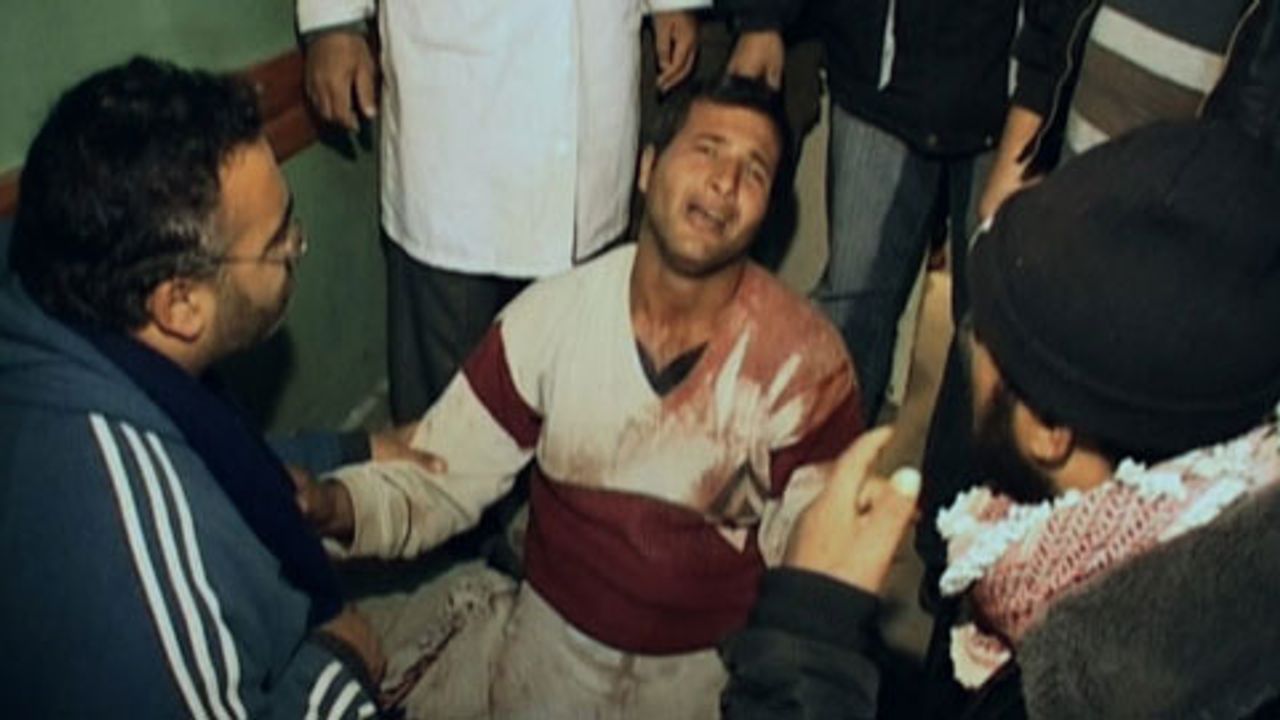 Crying father
Crying fatherThe Israeli military’s murderous assault in December 2008-January 2009 on the Palestinian population of Gaza is the subject of a powerful documentary by Norwegian director Vibeke Løkkeberg. The searing footage of a bombardment that lasted 22 days shook audiences at the festival. It is not easy to watch. Why should it be?
Løkkeberg and producer-husband Terje Kristiansen explained to us in a conversation that Tears of Gaza was assembled primarily out of frontline footage taken by numerous Palestinians.
During the siege, the international media were prevented from entering the Gaza Strip. Løkkeberg and Kristiansen organized the film, including the gathering of video material, from outside the war zone, in Israel and Egypt. The viewer watches as bombs drop on buildings and people run screaming from the smoking wreckage, at times carrying out wounded, dismembered or dead children.
More than 1,400 people, the majority of them civilians, were killed in the Israeli assault, of whom 400 were women and children. Thousands more were wounded. This compares to the death of 13 Israelis, including soldiers who died as the result of “friendly” fire. Some 20,000 houses, factories and other structures in Gaza were destroyed.
Tears of Gaza’s images uncover the gruesome reality behind these figures. The US government and media, and the Western powers generally, sat by and either encouraged the savagery, or did nothing to stop it. All of the individuals and institutions involved are complicit in war crimes.
Gaza is a small slice of land between the desert and the Mediterranean Sea where a million-and-a-half people are imprisoned. The WSWS commented at the time of the bombing that, “the plight of Gaza resembles nothing so much as the tragic fate of the Jews of the Warsaw Ghetto in Nazi-occupied Poland.”
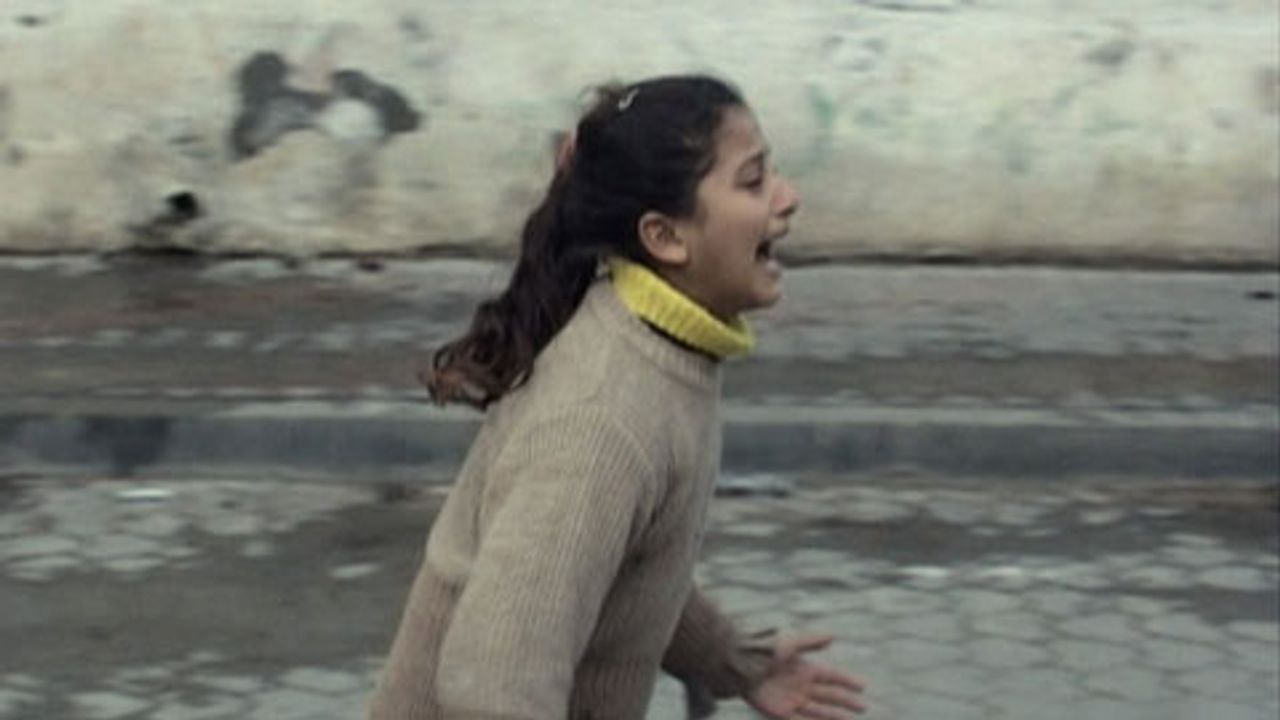 A girl fleeing the devastation
A girl fleeing the devastationWith an infrastructure already badly damaged from years of Israeli embargos and targeting of Gaza’s water and electricity networks, the raw footage captures fires being fought without sufficient water or equipment, and an aftermath of body-filled rubble. One cameraman points to three small children who were clearly executed.
A father shows the scarred flesh, from face to foot, of his young daughter. He wonders about her future and his ability to protect her. “Even if they give us the world, we will not forget,” says one young boy.
A lack of ambulances results in many of the wounded being carried in the arms of bystanders to hospitals, which function with the most rudimentary resources. The harried but experienced staff deal as best they can with the victims—many of them children—of phosphorous bombs and Dense Inert Metal Explosives (Dime), a device that explodes from the ground upwards leaving massive injuries to the lower part of the abdomen and body. Then there are the bodies too charred to identify and the grieving families too traumatized to talk.
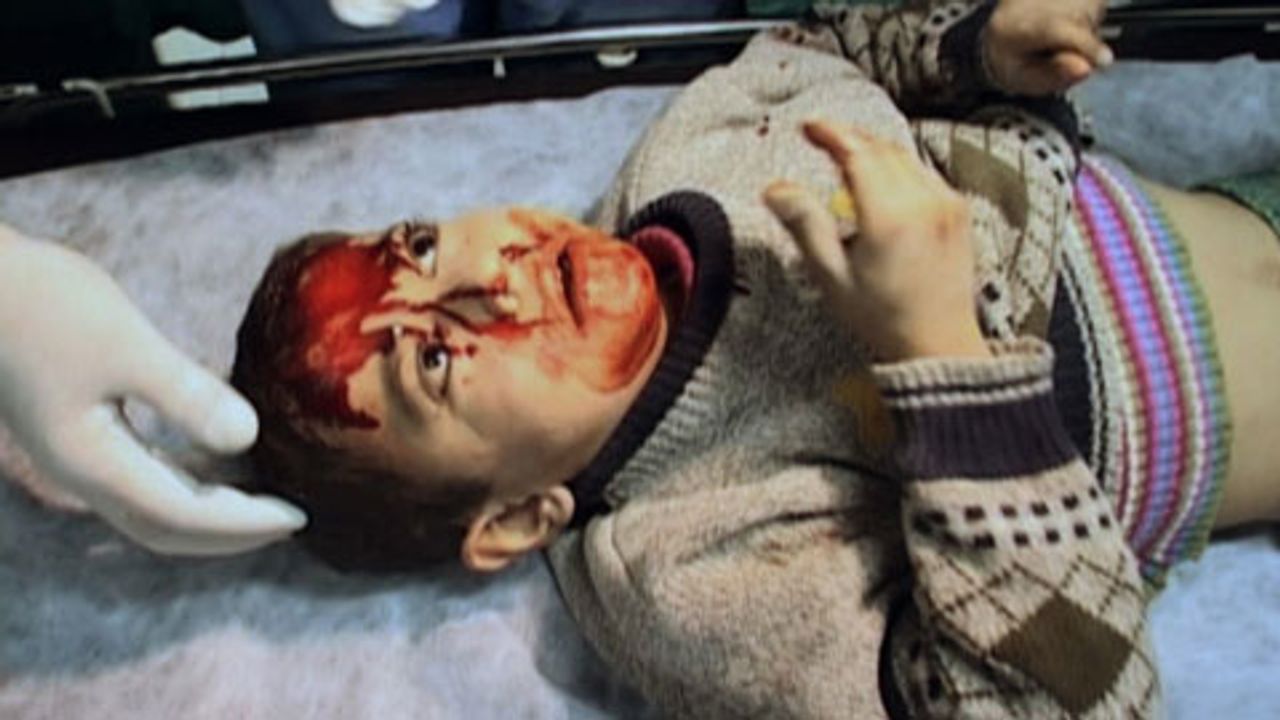 A wounded Palestinian boy
A wounded Palestinian boyIntercut in the footage are the stories of three young people—Yahya, Rasmia and Amira—who provide a shape and structure to a film that does not offer much in the way of political and historical context. The filmmakers interview the three, individually, in the period after the ceasefire. They have lost family members, and are without places to live, food, water and electricity. Rasmia tells the camera that she is always thirsty. The children describe how their schools were destroyed, even those run by the United Nations, and their books burned.
At the film’s Question and Answer session in Toronto, director Løkkeberg said she was motivated to make the courageous Tears of Gaza when she first saw the faces of children who had lived through the war on a television program.
We spoke to her and her husband in Toronto. We began by mentioning the protest that took place in 2009 over the showcasing of Tel Aviv by the Toronto film festival, only eight months after the attack on Gaza.
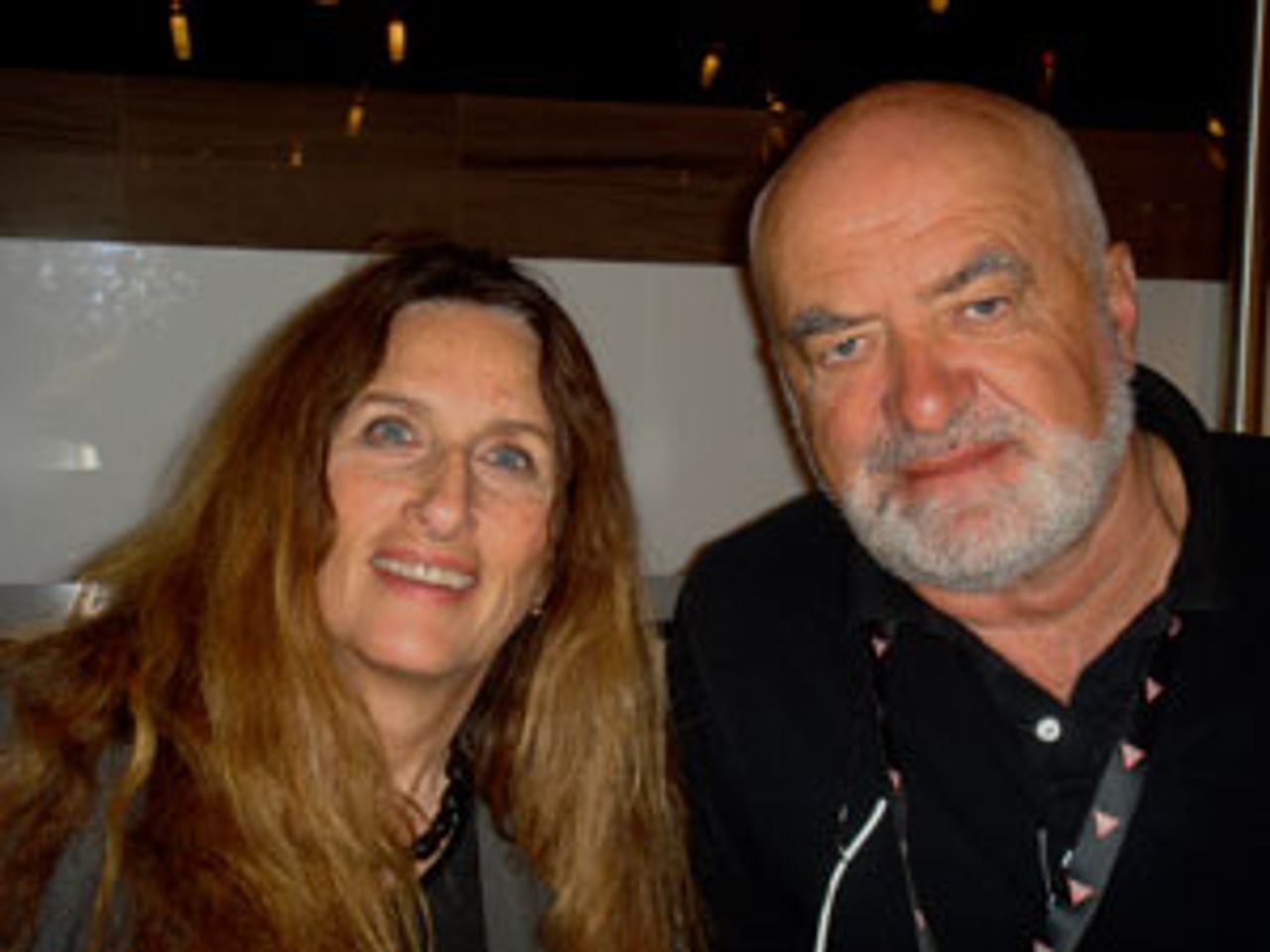 Filmmakers Vibeke Løkkeberg and Terje Kristiansen
Filmmakers Vibeke Løkkeberg and Terje KristiansenVibeke Løkkeberg: I know about the protest at the festival last year. I was afraid that my movie would not be accepted after I heard that [Prime Minister Benjamin] Netanyahu was here to strengthen Israel’s friendship with Canada. I read in the program that this year they featured Istanbul and that was to make up for what the festival did last year. I thought this film would never be sold, but a distributor in Canada wants to buy it, and now the Weinsteins in the US, who are very big.
It’s important that these things get shown because the media tries to make us into puppets who will believe all the accepted propaganda about events. We have the experience of WikiLeaks and the atrocities in Iraq.
David Walsh: The political atmosphere has changed and they can’t repress information as they would like. Gaza took place just months after the September 2008 banking collapse. There has been an enormous shift in thinking—a discrediting, a growing skepticism about capitalism’s claims.
VL: You can’t fool people forever. There was the flotilla that went to Gaza to deliver aid, and they killed the people. The Israelis don’t respect anybody.
Joanne Laurier: Clearly you’ve had long-term sympathy with the Palestinian cause. Could you speak about the origins of the film?
VL: Both of us have always marched in solidarity, but we had never been to the West Bank. That was a must for us when we saw this war on Gaza. I was so shocked I raced to my phone and called this organization, Free World, which has money and asked for help to get into Gaza in February 2009. They gave it right away. We went to Jerusalem and held meetings at the American Colony Hotel—the center for the press there.
We had press passes and we went to an Israeli military office where we asked permission to get into Gaza, and we were refused very adamantly. They treat people like enemies. If one is an honest person, you are suspicious. Then I contacted a reporter connected to Norwegian television who could go in and out before the war. No one got in except two Norwegian doctors who said, “This is awful, it must be stopped.”
I asked the television people if they could get their team into Gaza and film this little boy whose story I had seen on TV [Yahya]. I wrote down the questions and how it should be filmed. I insisted that they not stop the camera, because I wanted the audience to see everyday life, not in reporting, but film style. The woman who filmed was only 22 and open to what I wanted.
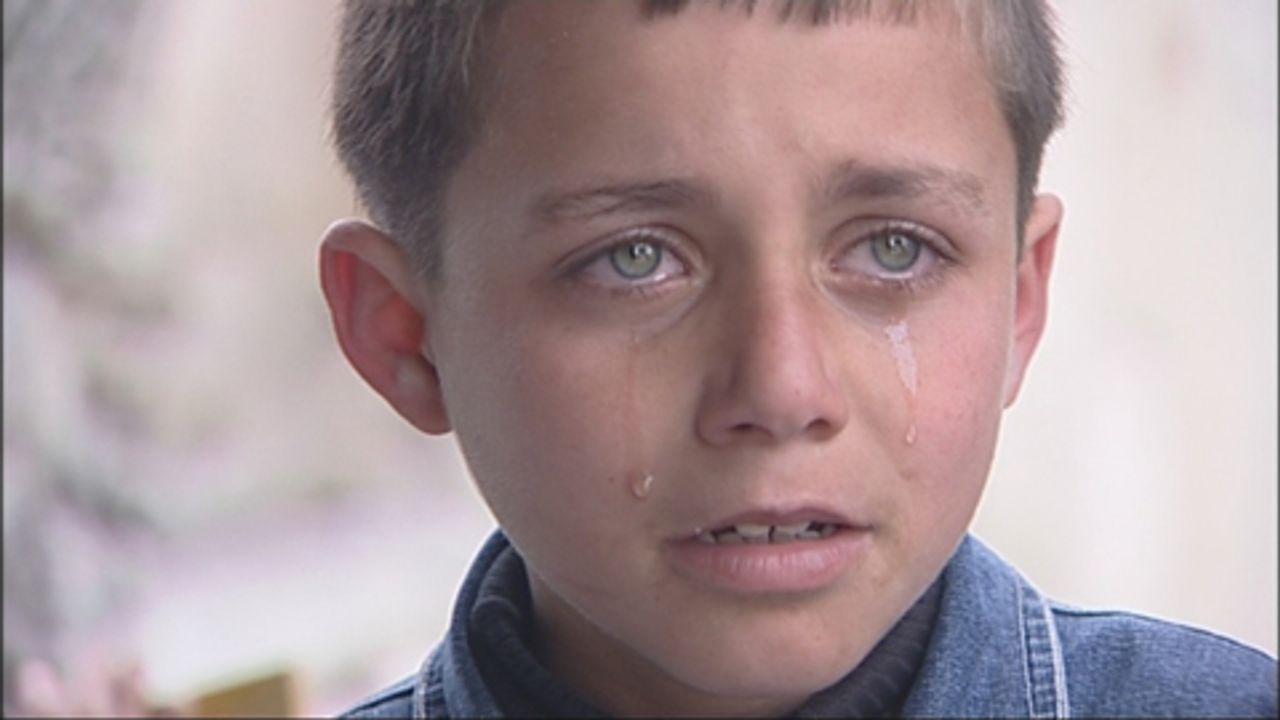 Yahya
YahyaJL: The footage of the bombing and its aftermath was obtained from different sources?
Terje Kristiansen: Only five minutes of the film are from Western archives. The rest was collected inside Gaza from different cameras, from people who were shooting on the spot where the attacks and the bombings took place. So it was a big job to collect all this material.
People in Gaza heard about the film and wanted to support it. We collected material for 10 months. After initially shaping the film, we discovered what we needed: for example, when the boy is talking about how the Israelis patrol the waters where the fishermen fish. We had to find the footage of the patrol boats, which we did. At home we have a library of 150 hours of unique footage from Gaza during the war.
DW: How many sources were there?
TK: Some 15 or 20.
VL: The footage of the girl who was at the UN school that was bombed is tragic. The people were asked to go there. Fifty schools in Gaza, they bombed them all. They have no schools today because the Israelis take away the only thing they have, which is education. Rasmia talks about coming back to her house and her schoolbooks had been deliberately burned. The Israelis are so systematic in taking away the last weapon the Palestinians have.
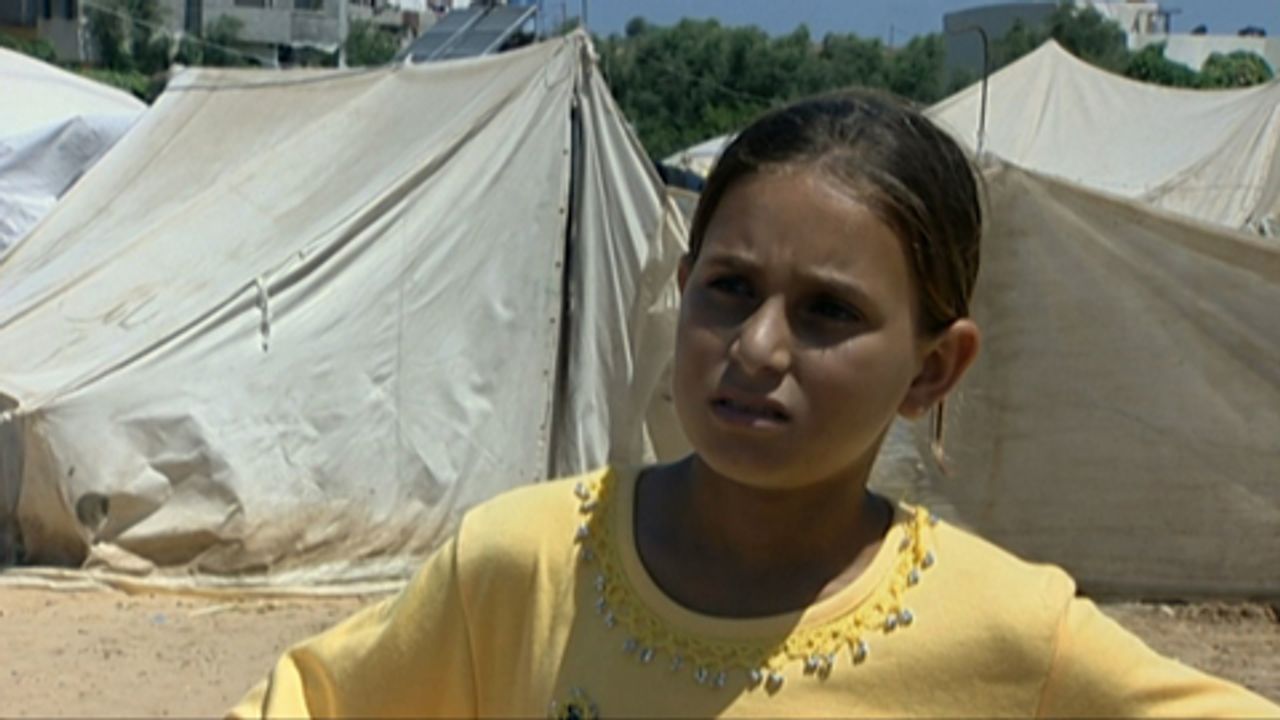 Rasmia
RasmiaJL: One of the hardest parts of the film to watch is the three small children who had been shot at point blank range. They were deliberately executed.
VL: They took the whole family and shot them. They said, “Come out of the house,” and then shot them all. How could one not want to show the world what is happening in Gaza?
TK: When Amira’s father was shot, she spontaneously said to her younger brother and sister, “Run and get an ambulance.” And then they ran out in the street and got shot. She then feels guilty.
The transportation of the footage out of Gaza was very difficult. We had to use different sources to transport it. We cannot mention who the couriers were for obvious reasons. We came very close to having the Israelis seize some of the film. In one case, they stripped the person and questioned her for hours.
VL: She will never forget what happened to her. They took her to a scary room whose floor was all grating. When she refused to undress they took her to another room. In the end, she was forced to undress and was terrified each time she was touched. This was on the Gaza-Israeli border. This is the way the Palestinians are treated all the time.
It’s the same in Egypt—we were there three times trying to get into Gaza. We tried the Norwegian embassy, we tried all the embassies.
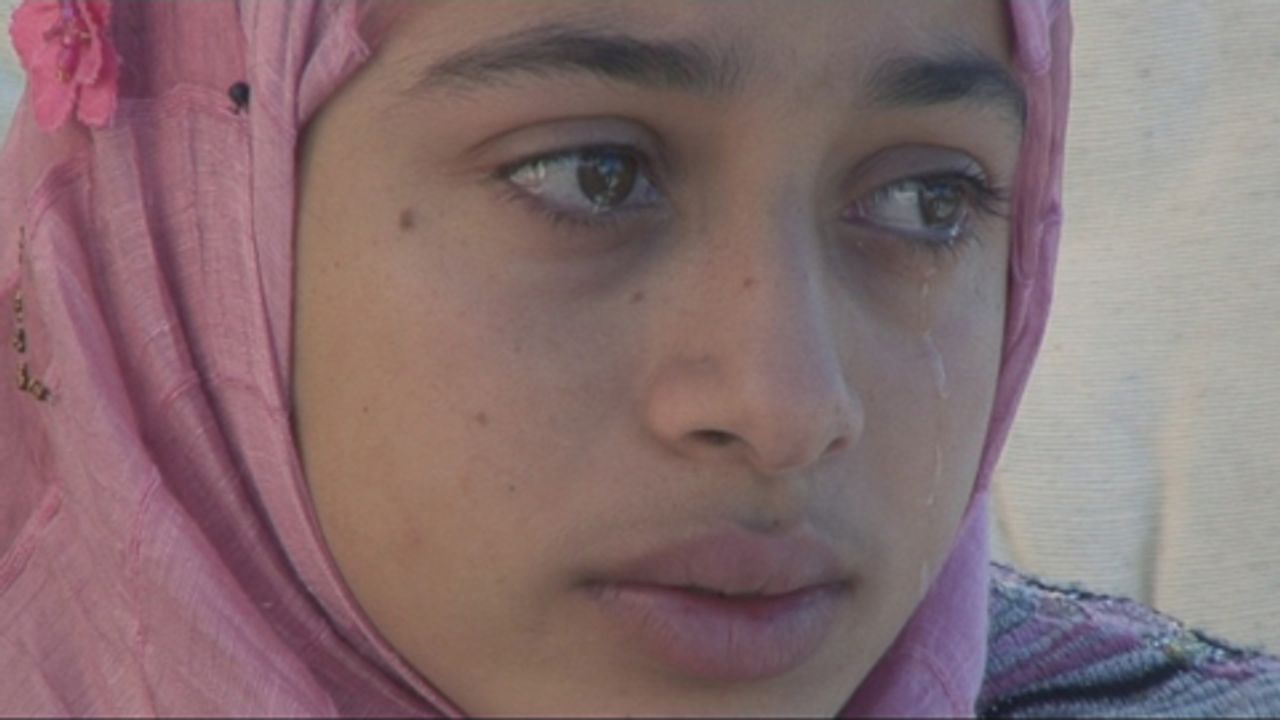 Amira
AmiraWe didn’t include in the film one of the stories about Amira, who is 14 years old. When she was getting out for medical treatment, she was questioned at the border for many hours. It is then difficult to get back into Gaza because when you have been out of the territory, the Palestinians think that you collaborated with the Israelis in order to get out. Because even those who are leaving to get medical treatment are asked by the Israelis to collaborate—to be their spies.
Amira did go to The Hague, to the International Criminal Court, and got the case for the killing of children accepted, as a war crime. It takes a long time, but it will be interesting to see what they will do with it. She is very courageous, and in the film she says she wants to be a lawyer to go to court against Israel.
She’s a very clever girl. When she came to Oslo, we were able to interview her with the help of one of the Norwegian doctors. My daughter who is also a filmmaker and photographer took some of the footage of Amira.
DW: Where is she now?
VL: She wanted to go back to Gaza even though the doctor tried to convince her not to. But she said, “If I’m going to die, I want to die with my family. There is no meaning for me without my family—my younger sister is left.” But they would not let her in because she has no papers—she has no country. So we went with her to Egypt, and we were stopped because she’s a Palestinian. They would not let her into Gaza at first. We were interrogated, and after many hours they allowed her into Gaza. After a long and difficult journey through the desert, we saw that she got in. But the border is another nightmare.
The making of this film changed us. We will never be the same.
JL: What about the media and censorship? There is more criticism of Israel in Israel than in the US media. That’s one of the reasons why this film is very important.
VL: You can see by the film that the bombing of Gaza was a war crime. This film is a proof that this was a war crime.
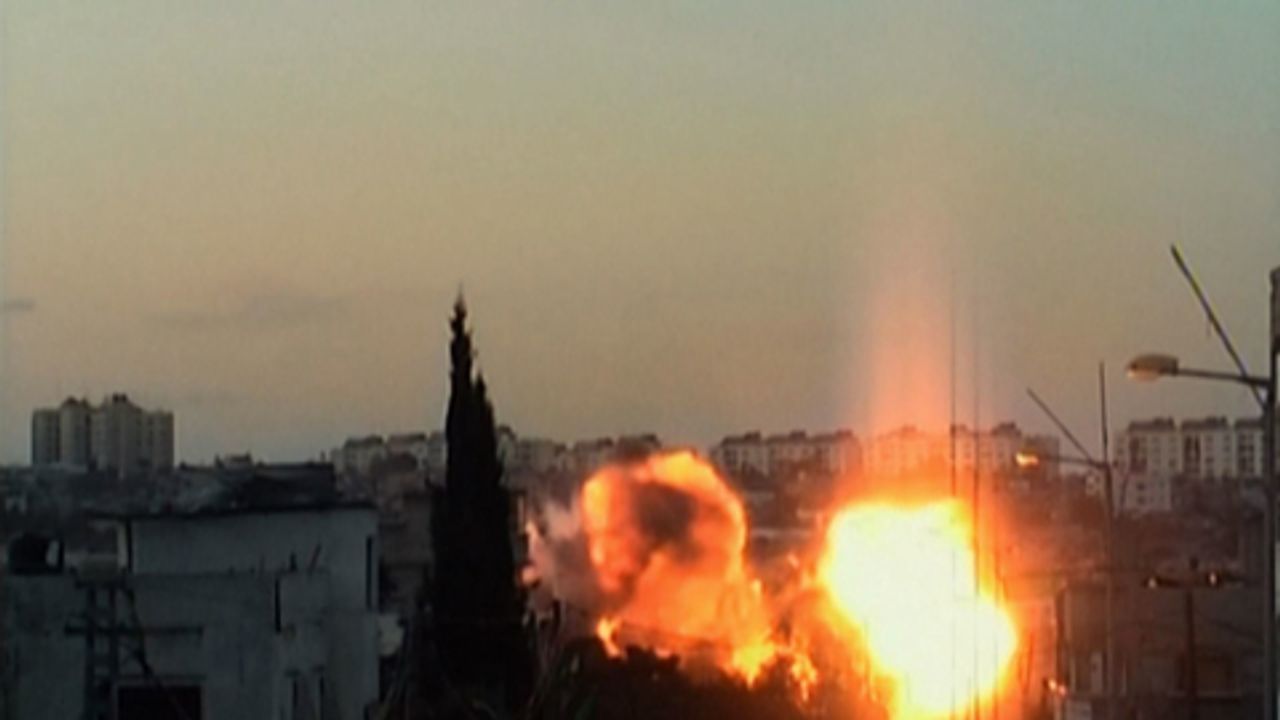
JL: The Israelis denied using white phosphorous bombs, but it is clearly shown in the film that they did.
TK: We were asked why we did not show the other side, the Israeli side. But when a bomb lands on one’s head, there is no “other side.”
VL: A handful of Israeli soldiers were killed, most by friendly fire. One person at a screening said that the children who were shot, were shot by Hamas. But you can see in the film that parents are not raising their children to be suicide bombers. But when young people have no future, nothing to live for, then they get desperate. I can’t imagine what the solution is. If they have a home it gets destroyed, if they have a school, it gets destroyed. The film shows people fighting the fires set off by the bombs and they have no water, they have no equipment.
TK: The Israelis systematically destroy the infrastructure, the water system, building supplies, everything needed to keep a society going.
VL: They even bombed the sewer system. So everything goes straight into the Mediterranean. And this is where they swim. They squeeze them from all sides.
DW: It’s called sociocide. The US military did the same thing in Iraq.
TK: That’s why casualty figures don’t give the true emotional sense of the crime. The main purpose of the film is to document the emotional impact of being the victim of a war. Images can change history. And as difficult as this film is to watch, it is a mild version of what we have in our archive. For example, they use bombs around the children that look like toys.
VL: There is also something new with this war. And that is bombs that deliberately destroy the lower part of the body—so that the population cannot propagate. This is collective punishment.
DW: Ironically, horribly, this is the lesson that a section of the Israeli elite drew from the Nazis. But there are many social contradictions within Israeli society.
VL: We are going to screen the film in Tel Aviv in October. The Israeli population does not know the reality of the war. The things in our film they have not seen on television.
TK: The film is a mobilizing force. People see it and want to do something. People want the truth, they like seeing it.
To be continued
